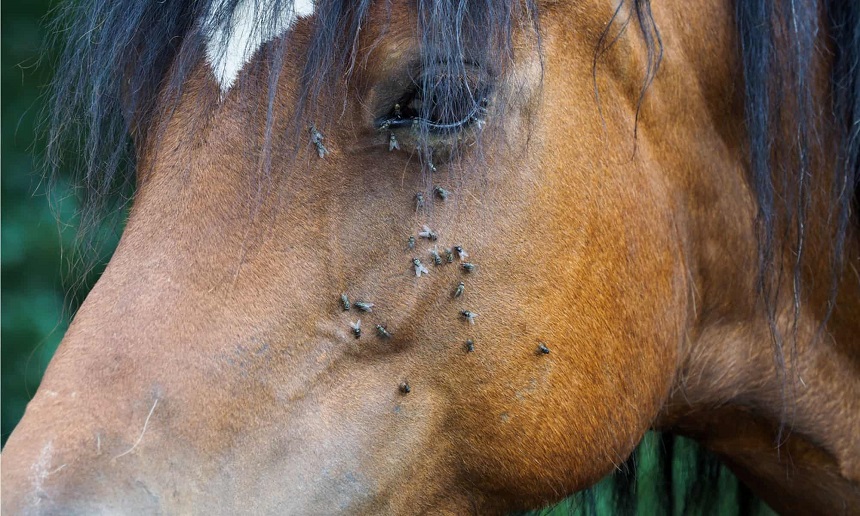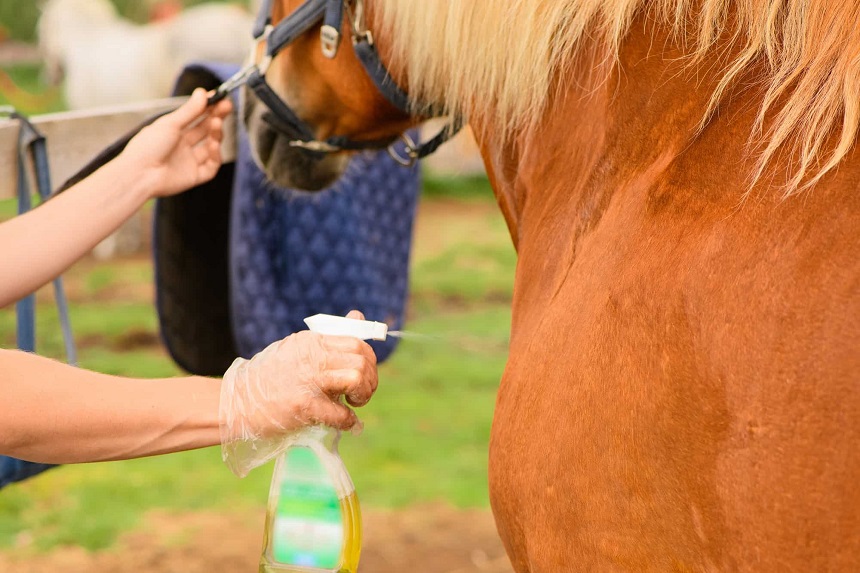

Horse flies are a very common problem for livestock and homeowners. Due to their scissor-like teeth, horseflies are infamous for their excruciatingly painful bites. Female horse flies are similar to female mosquitoes; they are interested in feeding on your blood. Male horse flies typically adhere to nectar.
A horsefly bite will cause a loud “ouch!” as opposed to a mosquito bite, which may not be detected until it starts to itch. Such nasty problems in your field need to be urgently dealt with. In this article, we will look at how to get rid of horseflies, their distinguishable features, and prevention methods. This task could be quite challenging, but with our guide, it would be a walk in the park.
Although they are one of the biggest flies in the world, they can be challenging to deal with but are often very simple to detect.
The US is home to approximately 160 species of horseflies, but despite their complete differences, most people still mistake them for huge houseflies. Horseflies are larger and can even reach a length of 1 inch (2.5 cm). The biggest difference, though, is in the way they act.
Horseflies hunt warm-blooded creatures, in particular, biting and sucking their blood. Houseflies, on the other hand, rarely sting people.
Remember that while male horseflies consume nectar and play an important role in pollinating many plant species, female horseflies suckle blood to reproduce.
Horseflies love the outdoors, especially in riverine areas. Therefore they are rarely found inside the home. For reproduction, they select moist soil near lakes and rivers.
To find out whether you have horse flies, look for these traits:

Horseflies rarely bite the head and neck regions of their host. Numerous mammals of practically all sizes, livestock, people, pets, and birds are among the hosts of horse flies. When a female horse fly is trying to feed, if she is interrupted, she will either resume feeding or move on to another host, where she will take a full blood meal.
There’s a good chance that you’ve experienced multiple horsefly bites. The bites are easily detected, and the symptoms are very conspicuous.
If bitten, the following symptoms and bite reactions may occur after being bitten:
Horsefly bites often do not cause harm to humans except for the brief discomfort they produce.
However, horse flies can spread this potentially fatal illness when they bite an equestrian animal. A horse that is afflicted may become unwell overall and develop a fever. While some horses may not show signs, they might still spread the illness to other equines.
Horseflies are a constant battle to get rid of, especially if you live near water or keep cattle in your home. The fresh ones always come back, no matter how often you kill and chase them away.
The only thing you can do is eradicate these ferocious insects from your property as soon as you discover them. There is no need to be concerned about the impact on the environment because of the increasing number of horse flies.
Although horse flies are notoriously challenging to eradicate, there are a few methods you can try, including physical traps, pesticides, and home cures.
The following recommendations will help you get rid of horse flies from your yard, pool, house, cattle, etc.
In theory, horseflies can be controlled with insecticides. Since they are primarily found near rivers and streams, treating these insects in the larva stage is impossible because doing so would likely pollute the water. The only thing you can do is administer synergized pyrethrin, a natural insecticide, to your animals every day. Insect activity will be greatly decreased as a result.

Spray a sizable area to shield numerous properties. Spraying a large region won’t take much time or work. The use of commercial repellants like Farnam SimpliFly and Pyranha Zero-Bite All Natural Fly Spray has been proven by experts to be very effective in getting rid of deer flies, horseflies, horn, house, and cluster flies.
To disperse the chemicals, use an airplane, loggers, hydraulic sprayers, or mist blowers. The chemical droplets will reach the fly habitat and kill the insects there.
Horseflies detest particular scents. This knowledge can guide you in creating DIY repellents to get rid of these pests. These scents include white vinegar, light mineral oil, eucalyptus oil, tea tree oil, citronella oil, lavender oil, lemon juice, etc.
Areas with plenty of cattle, people, or significant flora are most suited for using nontoxic physical traps. Here are a few possibilities for physical traps that work well against horse flies:
A bug zapper, an electrical discharge insect control system, electric insect killer, or (insect) electrocution trap, is a tool used to draw and kill flying insects drawn to light. Insects are drawn to an electrical grid by a light source, where they touch two wires with a high voltage between them and are electrocuted.
Horseflies are drawn to the UV light in these traps, using electrical metal grids to destroy them. You may want to check our compilation of the best bug zappers to fight horse flies.
Two sets of the female deer fly’s mouthparts, or “blades,” are used in biting to sever the victim’s skin. Blood starts to flow after the skin is cut, and the female utilizes various parts of her lips to scoop up and consume the exposed blood. Deer flies prey on many species, including people, pets, animals, and deer.
A host’s head or neck are frequently the insects’ primary targets. Horseflies, in contrast, feed in a variety of places but frequently go for the legs. In contrast, deer flies attack moving prey and frequently choose higher body parts like the head or neck.
Deer fly bites hurt and leave behind red lumps or welts. They spread rabbit fever, a rare bacterial disease (tularemia). Skin ulcers, fever, and headache are among the signs. Antibiotics can effectively treat tularemia but can also be lethal if left untreated.
Cleaning the area with soap and water will help to heal deer fly bites. To alleviate pain, you might apply ice to the area. You can also take antihistamines for allergies, such as diphenhydramine (Benadryl), to ease itching and lower the risk of secondary infection.
Horse flies are common in northern America and difficult to get rid of. They do pose serious problems to humans aside from their painful bites. They pose a threat to horses too. Hence, you must know how to get rid of horse flies in your house.
Destroying pests’ nests, hives, and breeding grounds is usually the most effective remedy. Horseflies can be a nuisance because their breeding grounds are usually not far from your home. Additionally, they often procreate in protected regions, where it is unlawful to try to eradicate them.
A better prevention option is to clothe and protect exposed body parts to reduce the likelihood of horse fly bites.